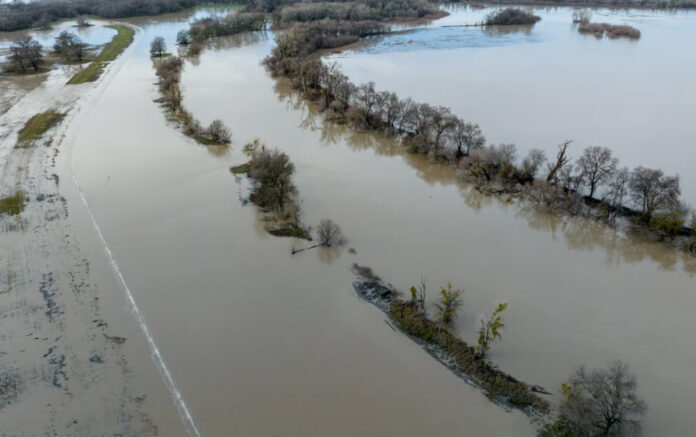by Manola Secaira
A new law expanding California’s atmospheric river research program goes into effect next year. It connects flood and reservoir control operations with new technologies and strategies that can help operators accurately predict the arrival of these storms.
California first established the program in 2015. It’s allowed officials to better understand — and respond to — the intense storms that are a regular part of wet years in the state.
In January, a series of atmospheric rivers hit California hard, causing intense flooding, power outages and evacuations throughout the state. But although these storms can have devastating effects, they also crucially feed into California’s water supply.
Democratic Assembly member Chris Ward, who represents the San Diego area, introduced the bill where the law originated. He said it will help California better respond to these storms.
“They can certainly cause damage,” Ward said of atmospheric rivers. “That said, [they] bring a lot of precipitation to California, and so we should be capturing as much of it as possible at the same time for our ongoing water supply needs for the rest of the year.”
Marty Ralph, director of the Center for Western Weather and Water Extremes, said more accurate forecasts will help reservoir operators add more storm water to the state’s supply.
“The methods, the technology, the tools, the data that we’ve developed has helped make it possible for a very important level of flexibility to be added to reservoirs where it proves out to be viable,” Ralph said.
A new strategy introduced in the law, developed by Ralph and his team, is called the Forecast Informed Reservoir Operations, or FIRO. Ralph said it could help reservoir and flood operations better prepare for more extreme storms prompted by climate change.
In the past, Ralph said reservoir operators would release water collected during a storm as soon as safely possible. The reason for this, he said, is that operators didn’t have the ability to predict whether or not another storm would follow and overwhelm their system.
But technology forecasting these storms has evolved quickly over the last decade. Ralph said new technology can predict when another storm is coming with more certainty. This allows reservoir operators to hold onto water captured during a storm for longer and, if the forecast is clear, actually keep that water rather than release it as a precautionary measure.
“If that last storm was actually the last big storm, then that extra water makes it all the way into summer,” Ralph said.
Beginning in 2014, Ralph said he and his team led FIRO pilot studies to test the effectiveness of the strategy. He said they saw a 13 to 19% increase in water supply available for the summer in the study locations.
In the future, Ralph said he wants to develop FIRO to the point where operators can confidently pre-release water ahead of an atmospheric river with the knowledge that the storm will replenish their supplies.
“That requires very special and deep analysis to ensure that priceless water for the summer isn’t lost somehow by doing this,” he said. “So if we’re able to have the chance to work on this long enough … which is partly what [the new law] helps ensure we can do, I’m confident we will develop situations and tools that will, in fact, benefit both the water supply reliability and the flood risk management improvement.”
Ward said this new approach also helps prepare California for more extreme storms brought on by climate change in the future.
“Having the technology in place to monitor and then predict what’s coming onto California’s lands … is going to be even more critical as we might be staring down some more dire conditions under a change of climate,” said Ward.
Ralph said FIRO could help the state manage its water supplies through both bigger, wetter storms and longer, drier droughts prompted by climate change.



















